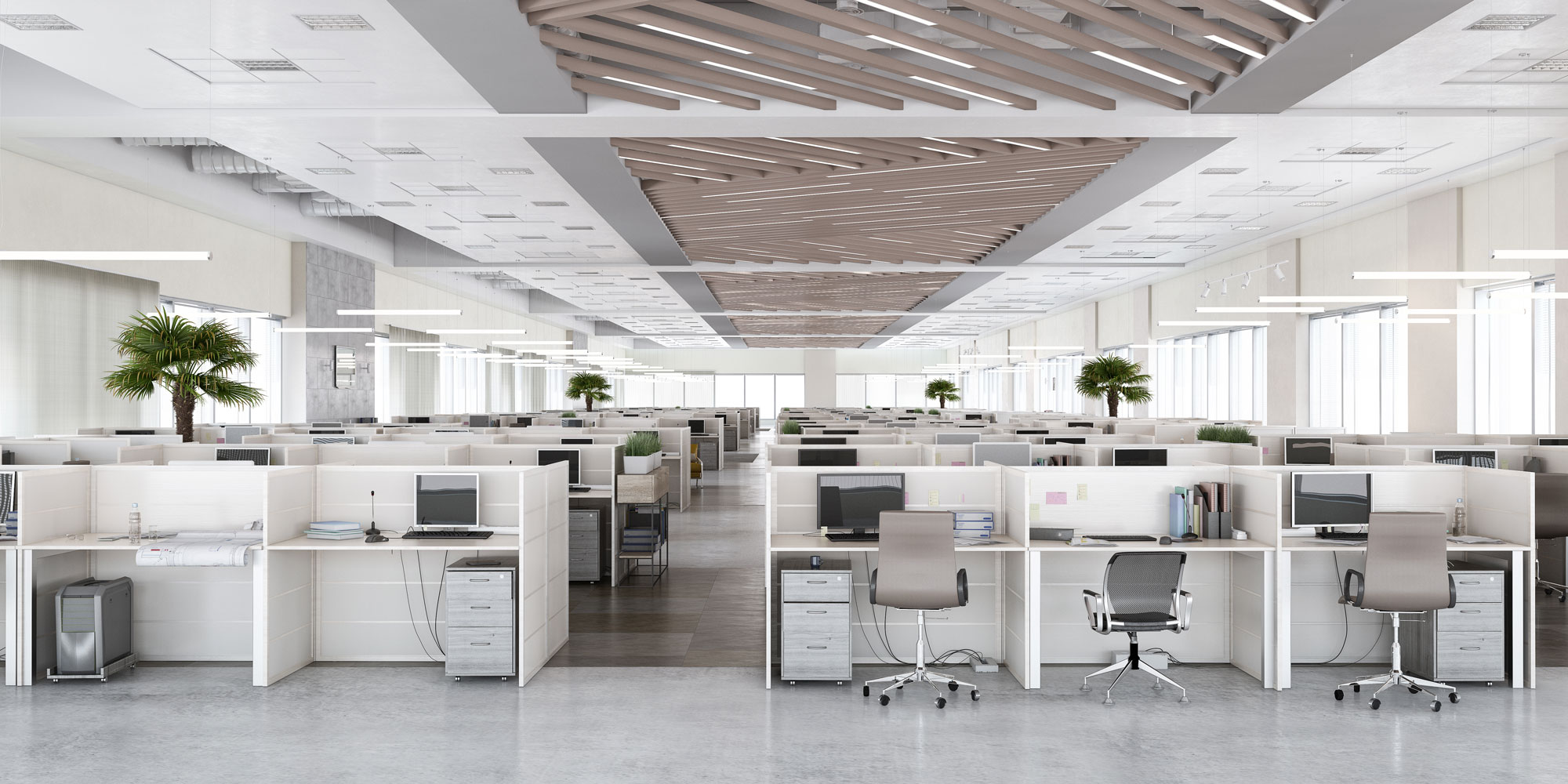Take a quick walk through your office right now. Notice the unused conference room that’s too big for most meetings, the corner that’s become a graveyard for old printers, or those rows of empty desks from pre-hybrid work days. If you’re like most businesses, you’re probably using only 60-70% of your space effectively, and paying for 100% of it.
The good news is that most space waste comes from fixable inefficiencies, not fundamental flaws in your office design. With some strategic adjustments, you can transform underutilized areas into productive spaces that actually support how your team works today.
What Are the Most Common Office Space Wasters?
The biggest culprit in office space waste isn’t what you’d expect—it’s not that storage closet full of holiday decorations from 2019. The real space killers hide in plain sight, disguised as “the way we’ve always done things.”
- Oversized Meeting Rooms
That impressive 20-person conference room sounds great until you realize 90% of your meetings involve 4-6 people. Meanwhile, employees huddle in hallways for quick discussions because smaller meeting spaces don’t exist. One large conference room could become two efficient meeting spaces plus a phone booth for private calls.
- Traditional Desk Layouts
Fixed desk assignments made sense when everyone worked on-site five days a week. Now, with hybrid schedules, you might have entire sections sitting empty Tuesday through Thursday. Hot-desking or neighborhood-based seating can reduce your footprint by 30-40% without anyone feeling cramped.
- Single-Purpose Spaces
The classic example: a beautiful break room used only during lunch hour. That’s 7 hours of wasted prime real estate daily. Multi-purpose design lets the same space serve as a casual meeting area, event space, or collaborative work zone throughout the day.
How Can You Identify Space Inefficiencies in Your Office?
Finding space waste doesn’t require expensive consultants or complex software—at least not initially. Start with simple observation and asking the right questions.
The One-Week Observation Test
- Track room usage with a simple spreadsheet
- Note which desks sit empty consistently
- Watch traffic patterns and congregation points
- Document storage areas and their actual contents
Pay attention to where people naturally gather versus where you’ve designated for gathering. If your team prefers impromptu meetings by the coffee machine over the formal conference room, there’s a reason. Understanding these patterns reveals opportunities for better space utilization.
Check your storage areas too. That room full of banker’s boxes from 2015 might be better served as a wellness room or phone booth setup. Digital document management has eliminated much need for physical storage, yet many offices cling to paper archives they’ll never touch again.
What Quick Fixes Deliver Immediate Space Improvements?
You don’t need a complete office renovation to reclaim wasted space. Small adjustments can yield surprising results within weeks, not months.
Furniture Reconfiguration
Simply angling desks differently can open up traffic flow and create natural collaboration zones. Replace bulky executive desks with slimmer models. Swap fixed-height tables for adjustable ones that can serve multiple purposes. Remove unnecessary furniture—if that credenza just holds old phone books, it’s time for it to go.
Flexible Zone Creation
- Convert underused offices into bookable focus rooms
- Add mobile whiteboards to create instant collaboration spaces
- Install modular furniture that reconfigures based on needs
- Use plants and screens to define areas without permanent walls
Smart Storage Solutions
Vertical storage maximizes floor space while keeping necessities accessible. Shared supply stations eliminate duplicate storage at every desk. Digital-first policies reduce paper storage needs dramatically. Archive off-site what you must keep but rarely access.
How Does Poor Space Planning Impact Your Business?
Wasted space costs more than rent—it affects your team’s productivity and your company’s culture. When employees can’t find appropriate spaces for different work modes, frustration builds and efficiency drops.
Consider the daily friction: teams cramming into too-small spaces while large rooms sit empty. Employees taking calls in stairwells because there’s nowhere private to talk. Creative sessions stifled by sterile environments that don’t inspire collaboration. These space mismatches directly impact work quality and employee satisfaction.
The financial impact extends beyond square footage costs. Poor space utilization can make your company seem unsuccessful to visitors and potential hires. It suggests poor planning and resource management. Conversely, a well-utilized space demonstrates efficiency and forward-thinking leadership.
What Role Does Hybrid Work Play in Space Optimization?
Hybrid work hasn’t just changed when people come to the office—it’s transformed why they come. Understanding this shift is crucial for effective space planning in today’s workplace.
Activity-Based Design Principles
Modern offices need to support:
- Collaborative project work requiring whiteboards and screens
- Video calls needing acoustic privacy and good lighting
- Focused individual work demanding quiet spaces
- Social interactions that build team culture
Instead of assigned desks sitting empty, create neighborhoods for different departments that scale up or down based on daily attendance. Include more collaborative spaces and fewer individual workstations. Design assuming 60-80% daily capacity rather than 100%.
Technology Integration
- Bookable desks and rooms via mobile apps
- Occupancy sensors to track actual usage
- Video conferencing capabilities in more spaces
- Power and connectivity at all potential work points
How Can BMS Help Optimize Your Office Space?
BMS Commercial Services brings a practical approach to space optimization that focuses on quick wins and sustainable improvements. Rather than pushing complete overhauls, the team identifies specific inefficiencies and provides targeted solutions.
The process starts with understanding how your team actually works, not how the original floor plan assumed they would. BMS’s space planning services analyze traffic patterns, usage data, and employee feedback to create recommendations based on real behavior, not theoretical ideals.
Implementation Support
Professional reconfiguration minimizes business disruption—most improvements happen over weekends or after hours. BMS coordinates furniture moves, technology updates, and any necessary construction. The team handles vendor management, ensuring your IT, furniture, and facilities changes align perfectly.
What Results Can You Expect from Space Optimization?
Companies typically discover they can accommodate the same headcount in 20-30% less space—or support 25-40% more employees in their existing footprint. But the benefits extend far beyond density metrics.
Employees tend to report higher satisfaction when spaces match their work needs. Collaboration improves when teams have appropriate areas for different activities. Productivity increases when friction from poor space planning disappears. Even company culture strengthens as thoughtfully designed spaces encourage the interactions you want to foster.
Financial benefits include reduced real estate costs, lower utility bills from more efficient space use, and decreased furniture expenses through better utilization of existing assets. Many companies find they can delay or eliminate planned expansions simply by using current space more intelligently.
It’s Time to Start Optimizing Your Office Space
Wasting valuable office space is surprisingly common but entirely fixable. Start by observing how your space is actually used versus how it was designed to be used. Focus on quick wins like furniture reconfiguration and flexible zones before considering major renovations. Contact BMS Commercial Services to discover how strategic space planning can transform your workplace efficiency without breaking your budget or disrupting your operations.





